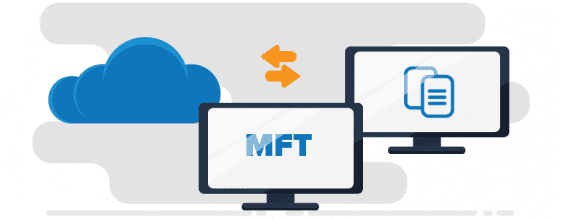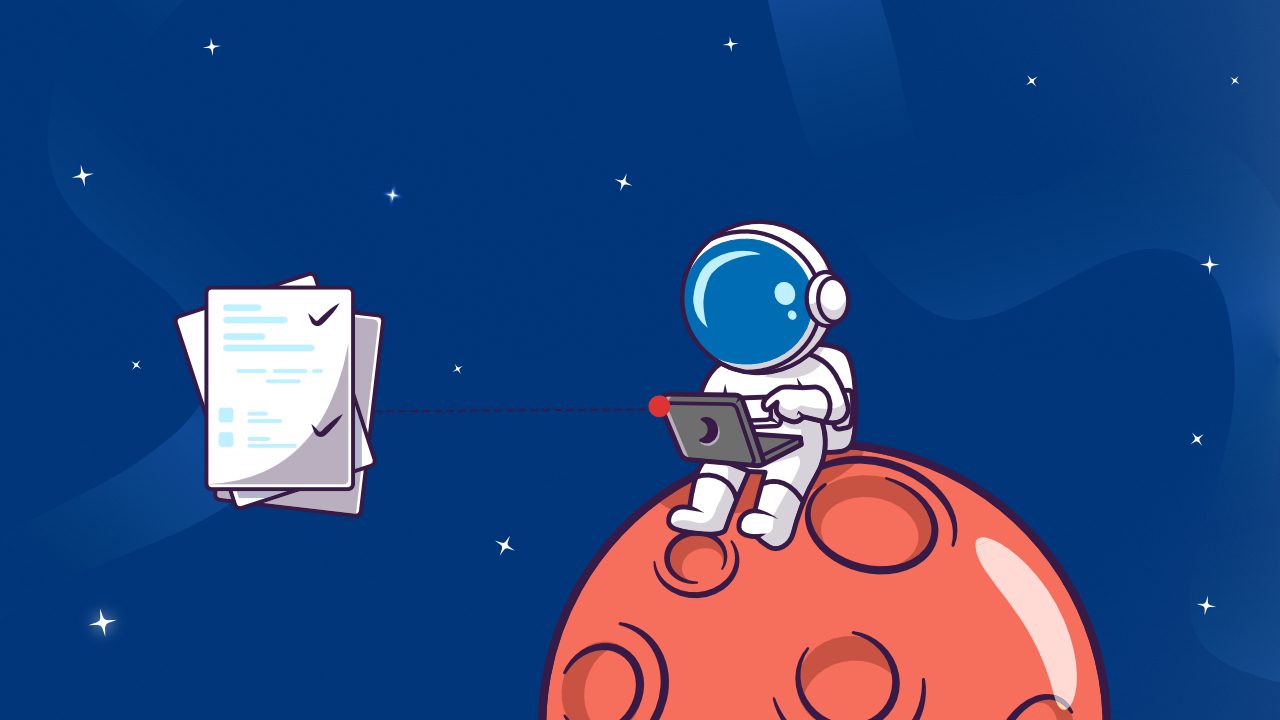As organizations increase the amount of data they transfer between users, employees, and trading partners; cybersecurity and IT teams race to keep up. One wrong move, like the lack of file encryption, can hit a business with huge fines for non-compliance. It’s imperative these errors are avoided so businesses can run at optimal levels 24/7. The solution, for many organizations, is turning to managed file transfer (MFT) software as an affordable, secure, streamlined way to meet their security needs.
MFT provides a higher level of security to protect critical data, like PII for healthcare providers and credit card payment information for banking organizations, from cyber threats and hackers. With MFT, organizations have peace of mind that their business processes will run smoothly and efficiently, without delay, error, or vulnerability. Managed file transfer software has many benefits, from encryption and automation to streamlined processes, reduced user errors, and increased collaboration with trading partners. But is it right for your situation? Use these six signs to determine if your organization is ready for MFT software.
1. You need to audit your file transfer activity
Several common scenarios can require you to audit your file transfers. Perhaps your trading partners and stakeholders want an overview of the month’s transfer activity. Or perhaps a file transfer failed, and you need to figure out where the process went wrong. Regardless of the situation, MFT software stores detailed audit records for all file transfer activity and workflows that run in the product.
Some solutions come with an interface that allows you to quickly search your audit logs for specific terms, users, or date ranges. You can also drill into your file transfer workflows for job log details, including when the job started, what project it was a part of, and whether each step of the workflow succeeded or failed.
2. You need to comply with data security laws and regulations
In our age of extreme data use, sharing, and storage, compliance is a serious requirement for any organization that processes personal data. For example:
- Health data (hospital records, medications used, test results, etc)
- Banking data (debit and credit card numbers, bank account details, etc)
- Personal data (home address, social security number, birth date, etc)
Failure to follow compliance requirements can cost an organization time, money, and social reputation. In some cases, it can destroy a business entirely.
Though it depends on the vendor, most MFT solutions can help make file transfers compliant with popular regulation (e.g. PCI DSS, HIPAA, HITECH, and the GDPR) requirements. You can expect to use features like auditing, reporting, role-based access, centralized security controls, key management, encryption, secure protocols, and more to protect customer and employee data from a harmful security incident.
3. You use traditional methods to send data
FTP has given organizations the ability to send and retrieve data quickly and affordably since the 1970s. Its remained popular; while new file transfer protocols have since surfaced to provide encryption, some IT teams still choose to use FTP for their file transfer needs. But they shouldn’t.
Cyberattacks have tested the integrity of FTP communication over the years. Because FTP is old and doesn’t meet modern cybersecurity standards, it’s a poor choice for sending files across private and public networks. And while it may be tempting to send data using homegrown solutions, older technology is often time-consuming, difficult to maintain, and ripe with security gaps and vulnerabilities. Using either of these methods (FTP and manual processes) can create liabilities for your organization if a data breach occurs.
On the other hand, MFT takes the risk, maintenance, and programming work off your plate. Managed file transfer software is easy to audit, friendly to use, and the ability to schedule batch transfers takes some of the hassle out of IT work. What’s more, it supports the use of secure data exchange using SFTP, FTPS, and HTTPS, all of which provide encryption; unlike regular FTP.
4. Your processes need to adapt to changing network conditions
In 2017, system downtime cost organizations an average of $100,000 an hour. Enterprise organizations saw even more revenue lost when an error occurred, raising this price to an average of $300,000 an hour or more. It’s not always easy to predict and prevent downtime, especially in the event of an unforeseen error or natural disaster. But you can prepare for its likelihood by achieving maximum high availability for critical file transfer systems and servers.
Solutions like GoAnywhere MFT provide active-passive and active-active (i.e. clustering) methods for organizations who need to keep their processes running no matter the situation. Clustering provides the best high availability by running multiple servers concurrently. If one goes down, file transfers and workflows will continue to run on the other server(s) so communication with your trading partners isn’t disrupted.
5. You need to comply with government requirements
Some organizations work with the government. As such, they need to follow the special reporting and encryption requirements developed by the US National Institute of Standards and Technology (NIST). With MFT, these requirements can be met using:
- FIPS 140-2 compliant AES and Triple DES encryption algorithms
- Audit logs and generated reports
- Secure authentication and user controls
- And more, depending on your needs!
6. You need to exchange data with trading partners in the cloud
Organizations are either moving some of their business processes to the cloud or need to exchange files with trading partners in the cloud. As cloud technology continues to grow, however, IT professionals struggle to address their partners’ requirements while maintaining proper cybersecurity practices. Is it safe to store sensitive data in a third-party cloud? Is it difficult to implement file transfers in a cloud-based environment?
MFT solutions are increasing their cloud support every day. Solutions like GoAnywhere not only help IT teams streamline and automate their cloud file transfers to platforms like Microsoft Azure and Amazon Web Services, they offer strong encryption for data—both in transit and at rest.
Some vendors also offer application integrations for popular web and cloud services like Box, Salesforce, and Google Drive. These integrations promote the movement of data between on-premises environments and the cloud applications you use every day, giving your processes an extra layer of security and automation.




